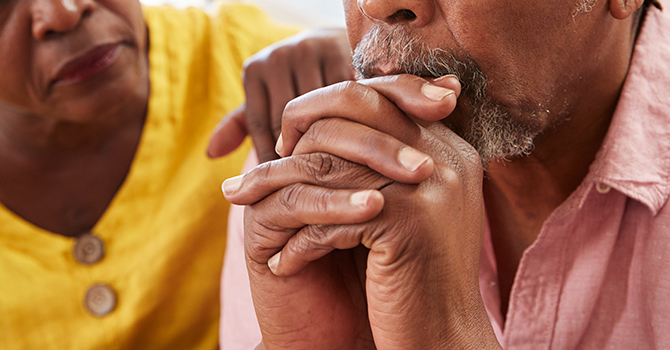Online Tools, Community Health Resource Guidance Could Help Older Adults Self-Manage Pain

New research from Mary Janevic
Associate Research Scientist, Health Behavior and Health Education
Providing older adults with mobile health tools and the support of community health workers to help navigate local resources could help them better manage their pain, say University of Michigan researchers.
While a pilot program conducted in Detroit was small, the researchers say it shows this targeted approach—part technology, part personalized human touch—could provide that extra push some older adults need to make progress.
"We know that one size doesn't fit all when it comes to chronic pain management and different people, different populations are going to need different things," said Mary Janevic, lead researcher of the pilot program and first author of a report published in the current issue of Pain Medicine.
"We wanted to come up with a program that would be resource-efficient so it would be relatively easy to implement in a community setting, but supported older people with chronic pain and adopting cognitive behavioral strategies that would help them better manage their pain."
The program called STEPS-2, or "Seniors Using Technology to Engage in Pain Self-management 2," included 31 participants, mostly African Americans recruited from community settings in Detroit. Participants had to be at least 60 years old, had reported pain in muscles or joints for three months or more, and had telephone and internet access.
The program included weekly short, web-based videos featuring experts to teach participants cognitive-behavioral pain management. Then, in weekly telephone sessions, community health workers guided and motivated participants to apply the video content, helping them overcome barriers and make referrals to health and social services as needed.
Javenic, an associate research scientist in the Department of Health Behavior & Health Education at the University of Michigan School of Public Health, said after two months, 90% of participants reported the program increased their understanding of pain management and helped them reach their pain management goals. A majority reported visiting the website more than the program required, nearly a third said their functioning was much better than it was at baseline, and some said they reduced the amount of medication they were taking.
One of the most interesting results was how much participants appreciated having a community health worker to talk to once a week, Janevic said.
"Chronic pain is a mind-body experience and stress can be so detrimental, it can make pain a lot worse," Janevic said. "Being able to address some of the stressors and things going on in your life ultimately also helps with pain management. So our community health workers did all of that. They were cheerleaders. They were navigators. They were teachers. They were listeners and friends. They were really able to accomplish quite a lot in those half hour phone calls each week."
This was even more evident, she said, as COVID-19 forced people to stay indoors, with some of the participants unable to leave their apartments even when living in a community setting.
"The world was turned upside down and the participants really especially appreciated getting those regular phone calls for someone to connect with each week when they were otherwise isolated," she said. "I think it ended up being a very helpful intervention, more helpful than we even could have imagined when we were designing it."
Next, Javenic and colleagues are hoping to test the program in a large, randomized controlled trial to get more definitive evidence that the program is effective in improving pain related functioning in older adults, particularly those from underserved communities.
Study co-authors include: Sheria Robinson-Lane, assistant professor of nursing; Susan Murphy, associate professor of physical medicine and rehabilitation; Rebecca Courser, researcher in health behavior and health education; and John Piette, professor of health behavior and health education, and internal medicine.
